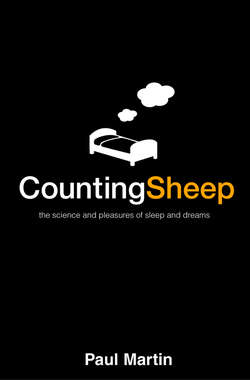Читать книгу Counting Sheep: The Science and Pleasures of Sleep and Dreams - Paul Martin - Страница 41
The sleep cycle
ОглавлениеSleep flooded over him like a dark water.
Jorge Luis Borges, Labyrinths (1964)
Two broadly different states are conventionally bracketed together under the general heading of sleep: rapid eye movement (REM) sleep and non-rapid eye movement (NREM) sleep. NREM sleep is further subdivided into four different stages, based on their characteristic EEG patterns. Each sleep stage has its own distinctive pattern of brain activity. The various stages and types of sleep alternate cyclically throughout a night’s sleep.
As you become sleepier, your EEG pattern changes. If you are tired enough, this can happen even when you are walking around and supposedly wide awake. The pre-sleep state of quiet restfulness is heralded by the appearance of brain waves of lower frequency and higher voltage, called alpha waves. If you are very sleepy, but still awake, your alpha waves will be accompanied by slow, rolling movements of your eyes. Nearly there. Then you are asleep.
The initial phase of sleep, which has the prosaic name of stage 1, typically lasts only a few minutes. Your muscles start to relax. If you are trying to sleep in a sitting position, the relaxation of your neck muscles will allow your head to slump forward, briefly waking you; your head straightens, you nod off again, and so on. hat is why you ‘nod off’. You can easily be roused into wakefulness from stage 1 sleep. If someone does wake you during stage 1 sleep you may be aware that you have been asleep, or you may be equally convinced that you have been awake the whole time. Stage 1 sleep is accompanied by a further slowing of the brain-wave patterns.
The next phase is known, predictably, as stage 2 sleep. This is signalled by the appearance on the EEG of two specific brain-wave patterns called K complexes and sleep spindles. The K complex is a single, strong wave that lasts less than a second. The sleep spindle is a brief burst of waves lasting less than a second. A sleep spindle on an EEG trace looks like a spindle moving along a loom, hence its name. During stage 2 sleep your eyes are still and your muscles are relaxed. You are less easily awoken by stimuli and you appear to an observer to be sound asleep. Altogether, stage 2 occupies about 45–50 per cent of a night’s sleep.
